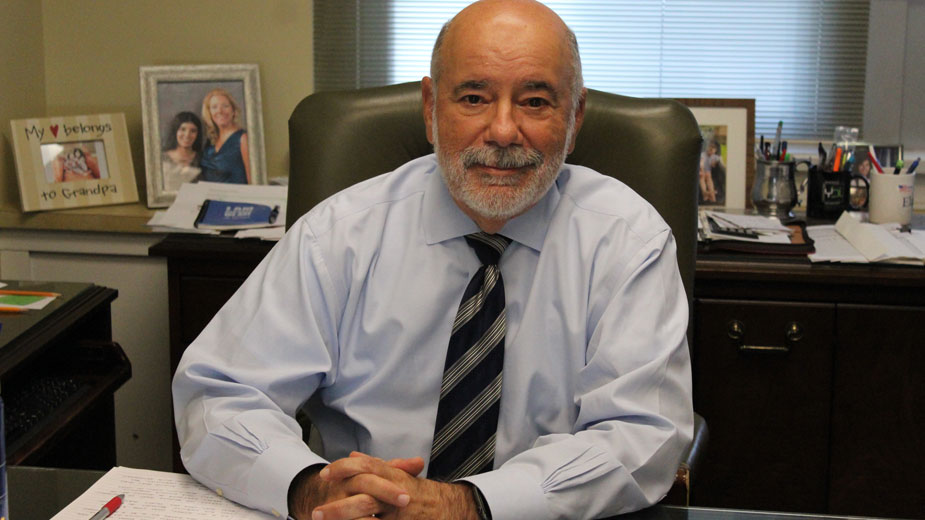Bankers See Commercial Lending on the Rise
YOUNGSTOWN, Ohio — Big projects are on the horizon in the Mahoning Valley – efforts such as The TJX Companies’ distribution center and General Motors-LG Chem’s battery plant – but much of the expansion is happening on smaller scales.
And with those expansions has come a surge in commercial lending.
“It speaks to the confidence and outlook of our region. We’re riding the wave and we hope it continues,” says Brett Carnahan, vice president of commercial lending for 717 Credit Union. “Construction is expensive. It’s a risk. And any time owners are willing to take that risk, they do their homework.”
Adds Bill Fulk, vice president of lending at the credit union, “Financing is one piece, but it’s not what’s driving their decisions. If they expand, adding one new employee can cost as much as building the new facility. They’re not only spending money on building, but in getting people to work there.”
Coming off a year where the Federal Reserve dropped its benchmark rate three times – a quarter of a percent each time – the commercial lending market has been bolstered more by confidence than where interest rates sit, area bankers agree.
“If there’s a drop in the Fed’s interest rate, businesses aren’t suddenly rushing out to borrow,” says Tim Shaffer, eastern regional president of Farmers National Bank. “It’s part of the process of the movement of the economy. The added benefit is that borrowed capital gets less expensive.”
At Cortland Bank, the dip in federal fund rates – ending the year at a range of 1.5% to 1.75% – led to conversations about refinancing loans, reports Cortland Bank chief lending officer Stan Feret.
“Rates are so low that the drops might have gotten people to take notice and put accounts over a hurdle to take the initiative on a loan,” he says. “Any time there are three rate drops, there’s discussion about refinancing. I don’t think that with where rates are now, it’s a major impetus to start new projects.”
Across the banks, activity was up slightly in 2019 over the previous year. 717 Credit Union’s commercial lending portfolio closed the year at $124 million. At Cortland Bank, commercial lending totaled $399.42 million. Farmers posted commercial loans totaling $872.6 million, while Home Savings Bank reported $994.36 million in its annual income report before the merger with First Defiance Financial Corp. was completed.
“It was a good, solid year as businesses overall did well. There’s optimism among business people for how the economy is going to do,” says Frank Hierro, Mahoning Valley president for Home Savings/First Defiance. “Some of the tax law changes from a few years ago have stimulated investment and that’s not changing. All in all, there’s solid performance and solid growth. We’re expecting 2020 to be similar.”
Home Savings posted its fourth consecutive year of double-digit increases to its commercial loan balances, Hierro adds.
Demand at all four banks has largely been in either financing equipment or mortgages. At 717, Fulk and Carnahan say financing construction is its largest commercial segment. A few years ago, Fulk says, the credit union typically saw about three construction loans a year. Currently, staff is working on putting the finishing touches on seven such loans.
“In 2018, we saw lots of encouraging signs of redevelopment and business owners willing to expand,” he says. “That really expanded in 2019. We’re seeing business owners either building new facilities or expanding. That’s been one of the largest growth areas for us.”
For Home Savings, a growing sector within commercial lending is financing the transfer of a business to either the next generation of leadership or to a third party, Hierro says. And as the Mahoning Valley gets older, that business should only increase.
The range of commercial lending products – mortgages, term loans and lines of credit – is spread fairly evenly across industries, the bankers report. Health care is a growing field primarily powered by the expansion of care for seniors, whether at skilled nursing or assisted living centers. Also on the upswing is manufacturing – although it’s not the fastest-growing sector – and trucking.
“Transportation was above average. They haul the GDP, so if the economy is doing well, they’re doing well,” Farmers’ Shaffer says. “We didn’t see any industries have a struggling year. Some did better than others, but that’s all relative. There weren’t any weak performances in the industries we finance.”
With business owners confident in the economy and rates near historic lows, there isn’t much on the horizon that would suggest a slowdown in lending as the larger economic expansion enters its 10th year.
“We’ve been in a growth cycle since the end of 2009 and in that time we’ve grown our commercial portfolio by 143%,” says Cortland Bank’s Feret. “What I’m hearing and seeing is that 2020 is going to again be a mildly successful year. No one’s planning on blowing the doors off, but no one’s expecting a real downturn.”
The largest obstacle that could slow commercial lending in 2020 is the presidential election, many agree.
“Especially later in the year, business people may hold off if it looks like it’ll be close as they wait to see who goes into the White House,” Hierro says.
Adds Farmers’ Shaffer: “The outcome of this election will determine the flavor of the policymakers relative to the economy. It’s looking like it’ll be a referendum on capitalism versus socialism, if you look at who the leading candidates are.”
“We’ll see what transpires,” he continues. “It will greatly influence how business owners feel about either a supportive government or one that’s not as supportive of small-business owners.”
Copyright 2024 The Business Journal, Youngstown, Ohio.



